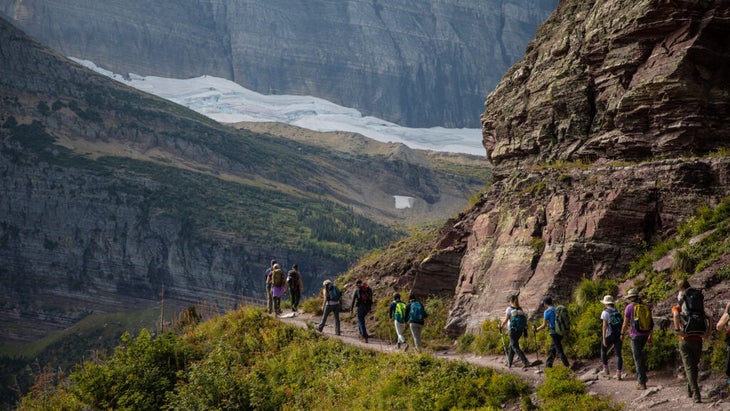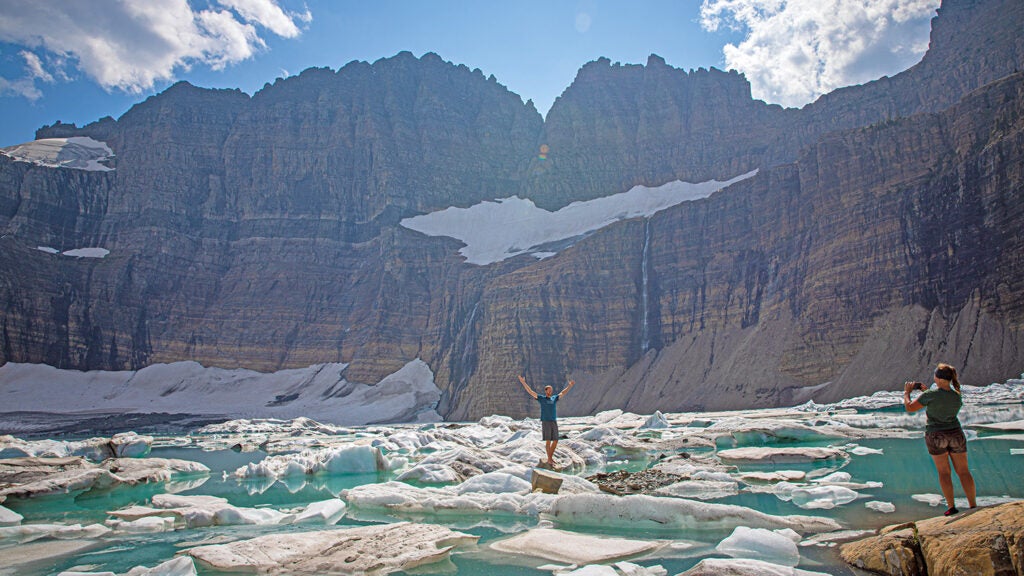No products in the cart.
Outdoor Adventure
5 Common Mistakes Visitors Make In National Parks
It’s August. That means millions of people from all over the world are flocking to our national parks. With them come a steady stream of news stories that range in tone from comedy to horror. People tend to underestimate our untamed spaces.
Every year, we see people struggling to enjoy their visits, having a bad time, or worse.
Last week, an employee in Death Valley National Park had to be rescued after becoming severely dehydrated and fainting during a hike. He was scrambling up the west face of Panamint Butte when he ran out of water. His dehydration was so severe that he lost consciousness and slid down a scree slope.
I get why people get in over their heads. There’s signage, helpful rangers in uniform, and amenities like gift shops, hotels, and restaurants. It’s easy to forget amid all the air conditioning, WiFi, and icy-cold beverages that these are wild environments.
Here’s how to avoid those problems, and make the most of your trip to any national park.
Don’t Make the Mistake of Assuming National Parks Are Safe
Staying at the Mammoth Hot Springs Hotel in Yellowstone? Those elk bugling in the parking lot are wild animals (extremely large ones) just about to enter their mating season, when the bulls will do battle to compete for females. The unique thing about the hotel is that you’ll get to witness that on the walk to your car. But despite the pavement under their hooves, those animals are still wil, and full of raging hormones—those huge antlers on their heads remain very dangerous.
I once went on national news to talk about tourists dying in national parks, and was asked with total sincerity by the host why someone couldn’t just build a fence around the Grand Canyon to prevent people from falling over the side. Beyond the challenge of building and maintaining a 2,600-mile long fence to encompass the canyon’s entire perimeter, the reason is that the entire point of a national park is to allow people to experience pristine nature in our country’s most beautiful places. Training the animals or building barriers would ruin that.

Don’t Mistake a National Park for Total Wilderness Either
Hiking down from Grinnell Glacier back to the Many Glacier Hotel last weekend, I was soaking my sweaty feet in Swiftcurrent Lake and watching my little cousins swim when another hiker waded in right in front of us, and proceeded to start gulping down handfuls of water straight from the lake.
This points to a unique duality in the nature of national parks: while they’re wild, they’re heavily visited.
That creates some important realities that visitors need to acknowledge, first of which is the need to filter any water you source from rivers, streams, or even lakes filled with sweaty humans or animal feces.
That’s also why it’s so important to minimize the impacts of our recreation. One poorly managed poo, for example, may not seem like a big deal, but scale a single undug hole or scrap of toilet paper across the 325 million visits the parks system gets every year, and you can see why it’s not only vital to carry a trowel or pack out waste, but also to filter that drinking water.
Plan Where to Stay in Advance
My wife and I have a cabin located near Glacier National Park’s west entrance, down a rural dirt road at the end of long driveway. So I totally get why, nearly every evening in the summer, someone drives down here hoping to find a place to camp. I can also picture their disappointment. Not only is there no camping along our road, but outside of often-fully-booked commercial campgrounds, there are no places to pitch a tent for dozens of miles in any direction. People who didn’t plan in advance end up parking illegally overnight in emergency pull outs. Not only does that risk a ticket or an accident, they’re also missing the opportunity to spend a nice night under the stars.
Camping inside national parks tends to be highly-regulated. Front-country, vehicle-accessed sites typically require reservations, which book up well in advance. Backcountry camping is usually limited to designated sites, which again require reservations or permits that you have to apply for ahead of time.
But there are often national forests or areas run by the Bureau of Land Management surrounding or adjacent to many national parks. In those, you’ll almost always be able to do something called dispersed camping, where you can set up camp pretty much wherever you please so long as you follow a basic set of rules.
I’ve detailed those rules, along with best practices and the necessary gear to pull off a successful dispersed camping trip in this article. If you’ve never done it, dispersed camping is a lot easier than you might fear, and, with just a little forethought, provides the experience most lost travelers who come down our driveway are actually looking for.

Realize[Know that] the Drive Might Be a Challenge
The other night, we drove into Many Glacier to enjoy a nice dinner at the hotel. The lodge there was built between 1914 and 1915. It has amazing views of the surrounding peaks, and the restaurant is probably a lot better than you’d expect for a place managed by a government contractor. But what’s an easy jaunt for us, in one of our heavily modified 4x4s with off-road tires set to 20 PSI, is a total nightmare for people visiting in rental cars and minivans.
The 12-mile road in is mostly dirt, and feels like the physical manifestation of the park service’s $23 billion-and-growing maintenance backlog. Just on that one night we saw one broken down pickup truck getting an assist from a park ranger that required a temporary road block, and dozens of cars creeping along at slower-than-walking pace. On previous visits, we’ve had to stop and help drivers stranded in surprise snow storms, or who’ve run out of gas.
Here in Glacier and in other parks (our primary home is just north of Yellowstone), our friends and family are often surprised by how much traffic there is. They can’t believe the long travel times involved in even day trips in and around the park boundaries, and the frequent and unpredictable jams caused by wildlife, weather, and inattentive drivers. And the new vehicle reservation system for some popular areas frequently derails impromptu hiking trips.
Many national parks are located in remote areas prone to extreme, unpredictable weather, and draw visitors who may be inexperienced at preparing for such conditions. At the very least (and especially if you’re using a rental car), make sure your tires have plenty of tread, are inflated to the correct pressures listed inside the driver-side door jamb, and take the time to map out fuel or recharging stops along your route.
You’ll want to leave plenty of range in reserve in the event something doesn’t go according to plan. Grab a can of Fix-a-Flat ahead of time, or at a gas stations. Carrying water and snacks, and appropriate clothing for the area and time of year, is also a good idea.
Don’t Forget Your Binoculars!
By far the biggest mistake I see visitors to national parks make is showing up without a pair of binoculars, which are the key to successfully spotting and observing wildlife. On my most recent trip, I used mine to study a flock of mergansers, watch a pair of bear cubs roll around in a meadow, spot bald eagles catching fish, and even stare in utter horror as a pack of tourists tried to walk up to a full-grown bull moose in an attempt to snap a selfie.
Good glass is such an essential tool for a successful visit that I’ve set up a duffle bag for friends. That way, I can easily hand them the ability to get the most out of their trip. In it is a set of Maven B.2 11×45 binoculars (the first number is magnification, the second objective size), that brand’s S.2 25-50×80 spotting scope, and an Outdoorsman’s tripod complete with the necessary attachments to mount either glass.
Source link

